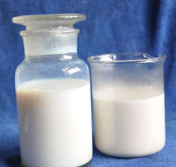Update:Waterborne polyurethane (PU) dispersions or emulsions are replacing solvent-based products in coatings, adhesives and in...
Waterborne polyurethane (PU) dispersions or emulsions are replacing solvent-based products in coatings, adhesives and inks. Nonetheless, pure waterborne PU dispersions have certain inherent defects. In order to obtain stable waterborne dispersions, hydrophilic groups such as carboxyl, sulfonic acid, ammonium or other ionizable groups must be introduced into the waterborne PU chain. The result is that the water resistance of water-based PU is worse than that of solvent-based products, so it is necessary to use some other "harder" polymers, such as polyacrylate, to modify water-based polyurethane. sex.

Polyacrylates (PAs) are an important polymer that can be used for PU modification. The advantages of polyurethane are: low temperature resistance, solvent resistance, good elasticity and flexibility, high gloss, and its hardness hardly changes with temperature; while its disadvantages include: poor water resistance and low mechanical strength. Correspondingly, the advantages of polyacrylate are: its high mechanical strength, and yellowing resistance, aging resistance, water resistance; its disadvantages are poor solvent resistance, and the polyacrylate film is sensitive to temperature, hot, sticky and cold crisp. Therefore, PU and PA are complementary in many aspects. The composite of PA and PU is superior to PA alone in terms of adhesion, film formation, anti-blocking, weather resistance, film elongation and strength. or PU components. Therefore, since the advent of PU, the research on the modification of PU by PA has been a research hotspot in this field.
